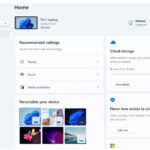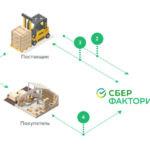Год выпуска: 2013
Производитель: CBT Nuggets
Автор: Jeremy Cioara
Продолжительность: 15:27:24
Тип раздаваемого материала: Видеоурок
Язык: Английский
Стоимость: 1999 рублей
Описание:
This Cisco video training with Jeremy Cioara covers Cisco voice technology, including topics such as voice gateways, voice protocols, quality of service, and more.
Related area of expertise:
Cisco voice
CVOICE 8.0 is a new VoIP world! Join trainer Jeremy Cioara on a CCNP Voice journey.
This course maps to the 642-437 exam, the first step towards CCNP Voice certification. You'll learn the critical foundational skills necessary to build a VoIP system. Without the knowledge from this course, you’re building your voice network on sand that will quickly wash out from under you!
With the addition of Cisco Unified Communication Manager Express (CUCME) in the new CVOICE 8.0, you can build an entire VoIP systems for a small-to-midsize office. Previous versions of CVOICE were never this cool!
This course is perfect for those aiming for a CCNP Voice certification, those looking to move to a VoIP system, and anyone who isn't afraid to get down and dirty with VoIP configurations.
[wpspoiler name="Подробное описание" ] 1. Welcome to CVOICE 8.0: Cisco Certification and Getting the Most from this Course (00:21:41)
Welcome to the Cisco CVOICE video series! This opening Nugget discusses the course objectives and their relation to the Cisco CCNP Voice certification path. You'll also see recent changes to the Cisco certification process that make real-world training (which is the goal of CBT Nuggets) the best possible way to prepare.
2. Voice Gateways: The Bridge Between Worlds (00:40:05)
This Nugget discusses traditional telephony and Voice over IP (VoIP) comparison and key terms; understanding the Cisco VoIP Solution; Cisco VoIP design models (single-site, centralized, distributed, and clustering over the WAN); common Cisco VoIP hardware (Voice Gateways, PoE switches, ATA adapters, IP phones, and CUCM servers).
3. Voice Gateways: Understanding Analog Voice Ports (00:40:58)
This Nugget discusses analog voice port options: FXS, FXO, E&M, and CAMA; analog voice port signaling types and standards; analog voice port configuration: call progress tones (cptone), PLAR, ring cadence, and signaling.
4. Voice Gateways: Understanding Digital Voice Ports (00:31:57)
This Nugget discusses digital voice port options: T1, E1, PRI; digital voice port signaling: CAS, CCS, Q.921, Q.931, QSIG; and digital voice port configuration: ds0-group and pri-group.
5. Voice Gateways: Handling Echo, Cross Connect, Timers and Verification (00:26:19)
This Nugget discusses remedies for echo on a VoIP connection; cross-connecting analog and digital ports together; analog timers (initial, hookflash, interdigit, etc...); verification commands.
6. Voice Gateways: Voice CODECs and DSP Resources (00:44:37)
This Nugget discusses the common VoIP CODECs used in the Cisco world: G.711, G.729, and iLBC; calculating bandwidth consumed by voice calls; managing DSP resources and using DSPFarms.
7. VoIP Foundations: How Spoken Voice Becomes a Packet (00:16:39)
This Nugget discusses the process of converting analog signal into digital format, including Nyquist Theorum, PCM, Quantization, G.711ulaw, and G.711alaw.
8. Dial Peers: Understanding and Using Dial-Peers (00:43:46)
This Nugget discusses the concept of Cisco Call Legs, the differences between POTS and VoIP dial-peers, and performs a base configuration of POTS/VoIP dial-peers on two Cisco routers.
9. Dial Peers: Wildcards and Voice Route Matching (00:33:12)
This Nugget discusses Destination-Pattern Wildcards, matching inbound and outbound dial-peers, and the concept of the "Forsaken Default Dial Peer 0."
10. Dial Peers: End-to-End Practical Scenario (00:46:15)
This Nugget is subtitled, "How to Set up Your House for VoIP." Jeremy puts together a complete demonstration from scratch covering the following topics: Bringing a PSTN line into an FXO port, FXS configuration, PSTN dial-peers, Private Line Automatic Ringdown (PLAR), automatic digit stripping (POTS dial-peers), forward-digits, VoIP dial-peers, and CODEC modification.
11. Dial Peers: Overlapping, Hunting, and Basic Manipulation (00:22:58)
This Nugget discusses the methods routers use to handle overlapping dial-peers and duplicate destinations, dial-peer hunt options, creating hunt groups, and basic digit manipulation commands (prefix, forward-digits, num-exp).
12. Advanced Dial Plans: Digit Manipulation and Transformation (00:37:58)
This Nugget discusses methods used to modify Caller-ID (ANI) information, translation-rules, and provides many examples of regular expression use with called and calling transformations.
13. Advanced Dial Plans: Configuring, Applying, and Testing Digit Manipulation (00:27:05)
This Nugget applies the topics from the previous Nugget (regular expressions, calling and called party transformations) into practical configuration. Topics include transformation-rules and transformation-profiles configuration.
14. Advanced Dial Plans: Calling Privileges with Class of Restriction (COR) (00:34:14)
This Nugget covers the implementation of calling restrictions using the Class of Restriction (COR) lists feature of Cisco voice gateways. Topics include the purpose of calling restrictions, reconstructing PSTN dial-peers, and understanding and implementing COR Lists.
15. CME: IP Phones, VLANs, and Communication (00:35:15)
This Nugget discusses the characteristics of Cisco IP Phones (allowing you to pick which model suits you)000, presents an understanding of key network configurations needed to support Cisco IP Phones (Voice VLAN, Quality of Service (QoS), DHCP, and Power over Ethernet (PoE)), and the IP Phone boot and registration process.
16. CME: Base Configuration (00:39:28)
This Nugget walks through the base configuration needed to support IP Phones using CME: Power over Ethernet (PoE), Voice VLAN (VVLAN), Network Time Protocol (NTP), DHCP, IP Phone Firmware, telephony-service (SCCP) configuration, and SIP configuration.
17. CME: Ephones and Ephone-DNs, Part 1 (00:28:33)
This Nugget builds on the base configuration in the previous Nugget to configure Ephone and Ephone-DNs, making internal VoIP calling possible.
18. CME: Ephones and Ephone-DNs, Part 2 (00:28:32)
Picking up right where the last Nugget left off, we break down the "button" command and perform multiple examples of shared lines, button overlay, and auto-assignment.
19. CME: SIP Phones, Ephone Types, Codecs, and Verification (00:30:29)
This final Nugget focused on CME discusses the differences between SCCP and SIP for end-point control, how to set up SIP-based devices in CME, the configuration of ephone-types and default CODECs, and the verification/troubleshooting steps you can use with CME.
20. Voice Protocols: At the Core (00:31:22)
This Nugget provides an overview of the key voice protocols used day-to-day: RTP, RTCP, H.323, SIP, and MGCP. Also discussed are the multiple flavors and features of RTP: cRTP, SRTP, and VAD.
21. Voice Protocols: H.323 (00:46:16)
This Nugget provides an in-depth look at the H.323 signaling protocol, covering the call setup and feature negotiation protocols (H.225 and H.245) as well as H.225 RAS (for Gatekeeper signaling). The final portion of this Nugget covers H.323 gateway and gatekeeper configuration.
22. Voice Protocols: SIP (00:36:54)
This Nugget provides an in-depth look at the SIP signaling protocol, covering the protocol architecture (proxy, registrar, location, and redirect servers), call flow, and configuration.
23. Voice Protocols: MGCP (00:21:45)
This Nugget provides an in-depth look at the MGCP signaling protocol, covering the protocol architecture, call flow, and configuration (from the voice gateway perspective - please see CIPT for the Call Agent configuration).
24. Cisco Unified Border Element: The Voice Gateway of Voice Gateways (00:21:20)
This Nugget explores Cisco Unified Border Element (CUBE), which acts as a boundary for your voice network. Topics include CUBE concepts, H.323 and SIP protocol interaction, and configuration.
25. Quality of Service: The Missing Ingredient (00:47:58)
Without Quality of Service (QoS), your voice network will quickly crumble under the iron fist of data traffic. In this Nugget, Jeremy identifies the "Evil Villains" (delay, jitter, and packet loss) of the voice network and breaks down the different QoS tools you have at your disposal to handle them. The Nugget concludes with a configuration walk-through of the Modular QoS CLI (MQC) structure (class-map, policy-map, service-policy).
26. Quality of Service: CoS, ToS, DSCP, and Trust Boundaries (00:45:35)
Understanding the various markings you have at your disposal in the QoS world can be confusing at best! In this Nugget, Jeremy walks through the full explanation of Class of Service (CoS), Type of Service (ToS), IP Precedence, and DSCP. Get your brain ready for this one!
27. Quality of Service: Queuing with CBWFQ and LLQ (00:46:13)
In our modern times, all the previous congestion management (queuing) strategies - priority, custom, and weighted fair queuing - have all melded into one: Low Latency Queuing. Join Jeremy in this Nugget to discuss the need for queuing, the intricacies of LLQ, and the configuration of both LLQ and AutoQoS.[/wpspoiler]



